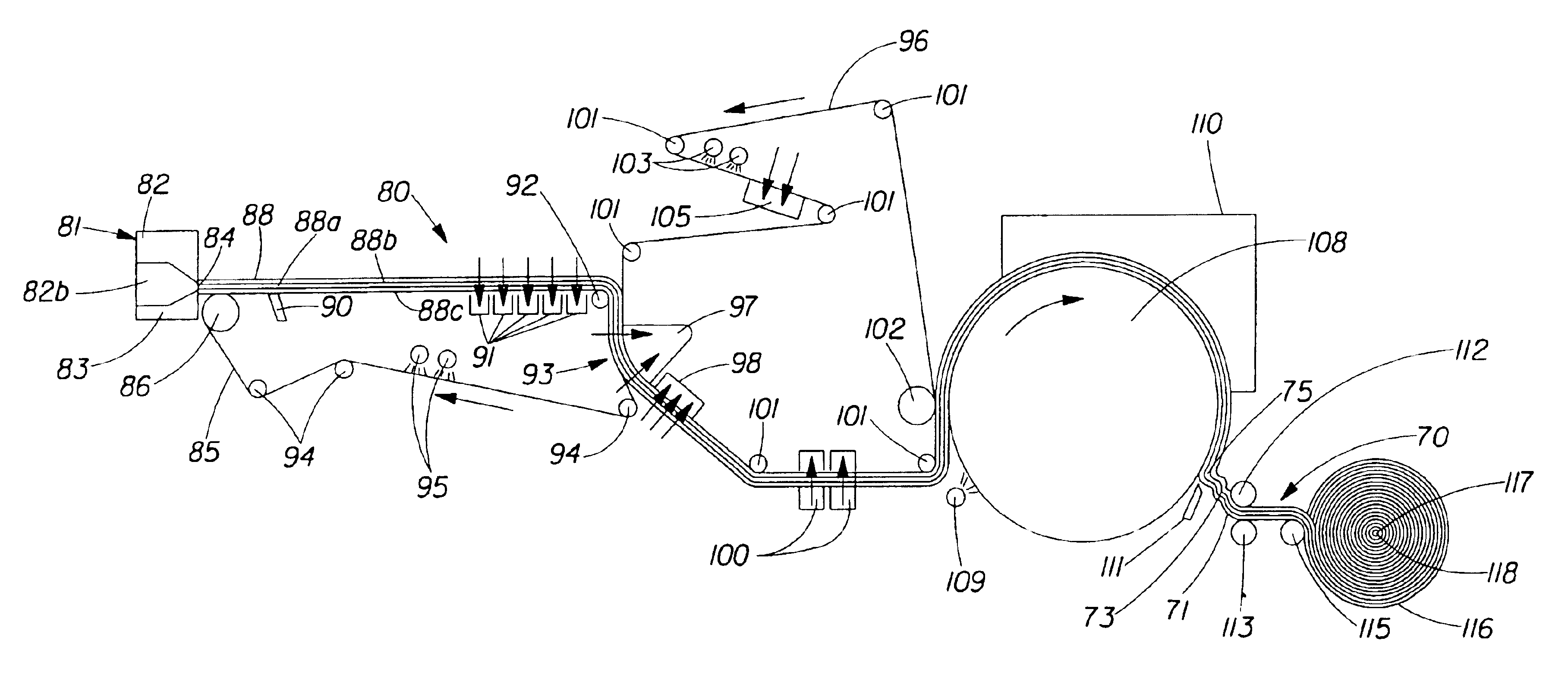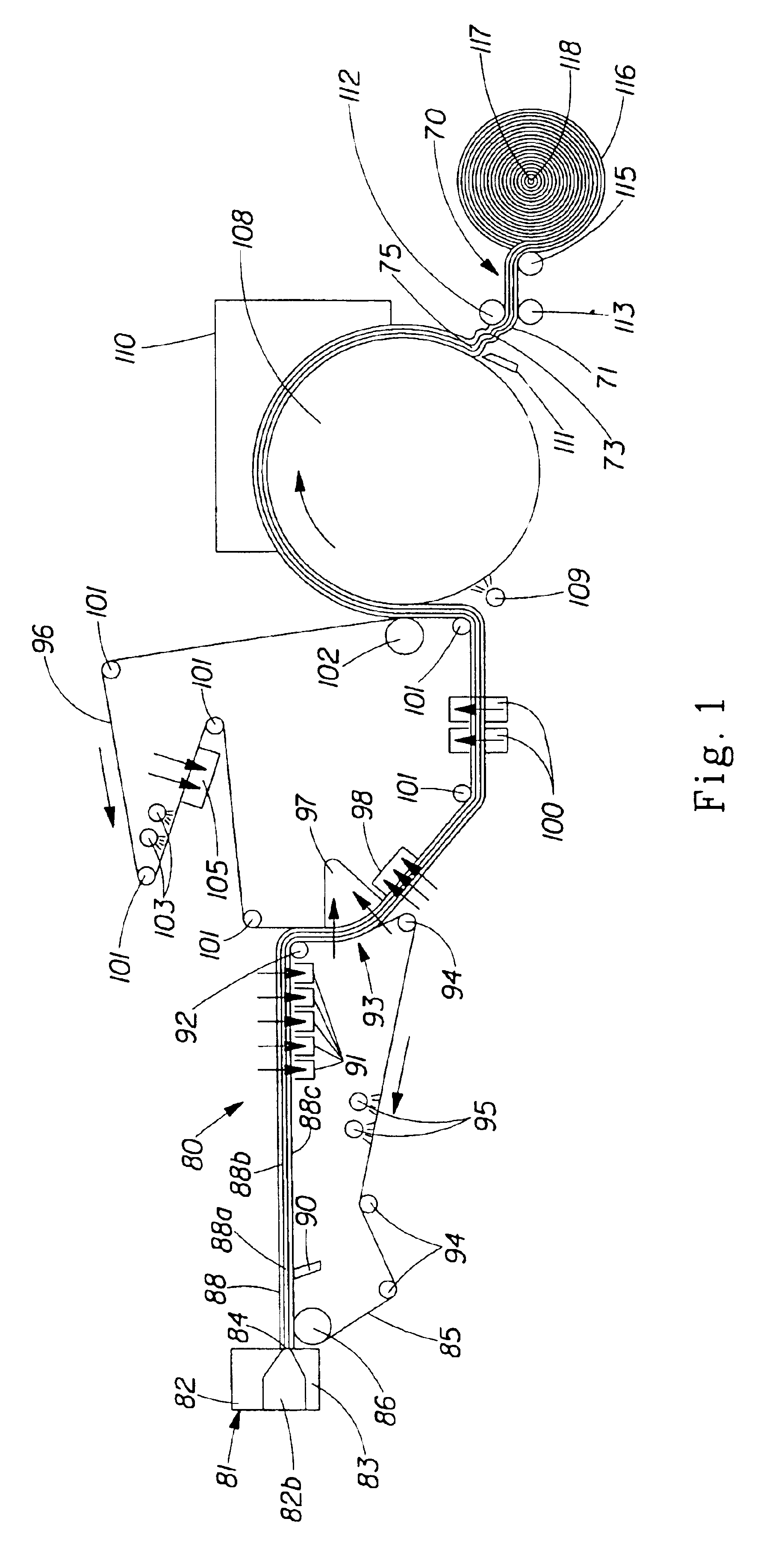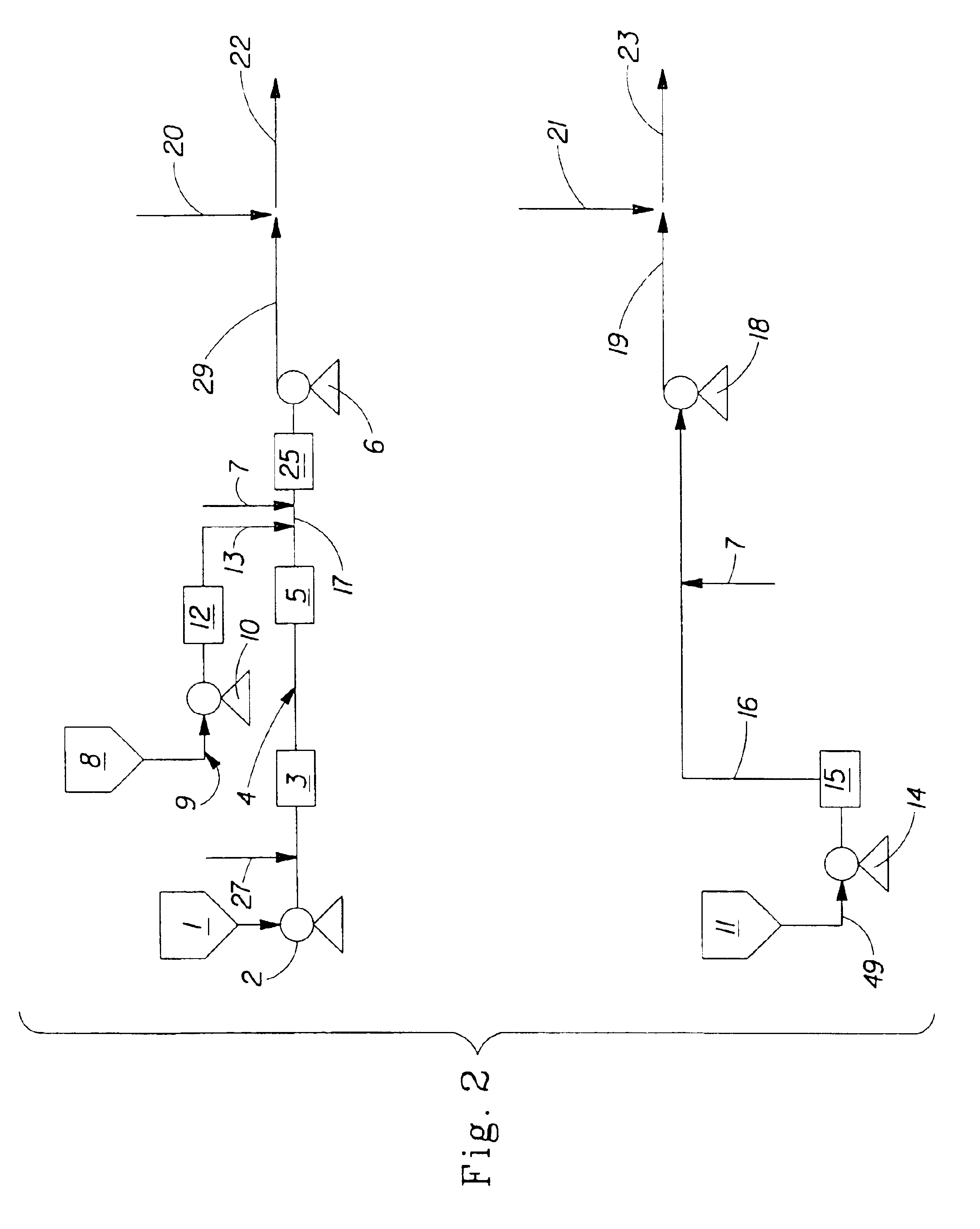Low viscosity bilayer disrupted softening composition for tissue paper
a tissue paper and composition technology, applied in papermaking, non-fibrous pulp addition, press section, etc., can solve the problems of many cleaning, the use of these products does not reach the level of cleanliness that can be achieved, and the effect of effective cleansing the skin is a persistent personal hygiene problem, and achieves acceptable strength and absorbency, reduce the bonding of fibers to fibers, and improve the effect of softness
- Summary
- Abstract
- Description
- Claims
- Application Information
AI Technical Summary
Benefits of technology
Problems solved by technology
Method used
Image
Examples
example 1
This Example illustrates preparation of a preferred embodiment of the softening composition of the present invention.Materials used in the preparation of the chemical softening mixture are:1. Partially hydrogenated tallow diester chloride quaternary ammonium compound premixed with polyethylene glycol 400 and an ethoxylated fatty alcohol nonionic surfactant. The premix is about 69% quaternary ammonium compound (Adogen SDMC-type from Witco incorporated) 29% PEG 400 (available from J. T. Baker Company of Phillipsburg, N.J.) and 2% nonionic (available from Shell Chemical of Huston, Tex. as Neodol 91-8). The Blend is available from Witco as DXP-5429-14.2. Calcium Chloride Pellets: from J. T. Baker Company of Phillipsburg, N.J.3. Polydimethylsiloxane: 10% active emulsion (DC2310) from Dow Corning of Midland, Mich.4. Hydrochloric acid (25% solution) from J. T. Baker Company of Phillipsburg, N.J.5. Stabilizer HOE S 4060, from Clariant Corp., Charlotte, N.C.
These materials are prepared as fo...
example 2
This example illustrates the effect of nonionic surfactant chemical composition on a key softening composition property—viscosity. Chemical softening compositions are made up by first preparing a master batch containing all of the ingredients of the softening composition except a bilayer disrupter. The formula for this composition is given in Table 1.
TABLE 1ConcentrationComponent(%)Partially hydrogenated tallow diester41chloride quaternary ammoniumcompoundWater39PEG 40019CaCl20.6Stabilizer0.5Polydimethylsiloxane0.02HCl0.02
Test softening compositions are then prepared by bending potential bilayer disrupters with the master batch at levels of 1%, 2%, 3%, and 1%. Viscosity of each of the test softening compositions is measured according to the method described in the TEST METHODS section below. The viscosity of the master batch is also measured. Table 2 lists the test materials, their HLB (a measure of emulsifying effectiveness), and the viscosity for each of the composition made.
TABLE...
example 3
The purpose of this example is to illustrate a method using a conventional drying papermaking technique to make soft and absorbent tissue paper treated with a prior art chemical softener composition comprising a premix of Di(Hydrogenated)Tallow DiMethyl Ammonium Methyl Sulfate (DHTDMAMS) and a Polyoxyethylene Glycol 400 (PEG400) in solid state and a wet strength additive resin.
A pilot scale S-wrap twin-wire papermaking machine is used in the practice of the present invention. First, the substantially waterless self-emulsifiable chemical softener composition is prepared according to U.S. Pat. No. 5,474,689 wherein the homogenous premix of DHTDMAMS and PEG-400 in solid state is dispersed in a conditioned water tank (Temperature about 66° C.) to form a sub-micron vesicle dispersion.
Second, a 3% by weight aqueous slurry of Deinked Market Pulp (DMP) is made up in a conventional re-pulper. The DMP slurry is refined gently and a 0.25% solution of the wet strength resin (i.e. Kymene 557H as...
PUM
| Property | Measurement | Unit |
|---|---|---|
| densities | aaaaa | aaaaa |
| densities | aaaaa | aaaaa |
| density | aaaaa | aaaaa |
Abstract
Description
Claims
Application Information
 Login to View More
Login to View More - R&D
- Intellectual Property
- Life Sciences
- Materials
- Tech Scout
- Unparalleled Data Quality
- Higher Quality Content
- 60% Fewer Hallucinations
Browse by: Latest US Patents, China's latest patents, Technical Efficacy Thesaurus, Application Domain, Technology Topic, Popular Technical Reports.
© 2025 PatSnap. All rights reserved.Legal|Privacy policy|Modern Slavery Act Transparency Statement|Sitemap|About US| Contact US: help@patsnap.com



